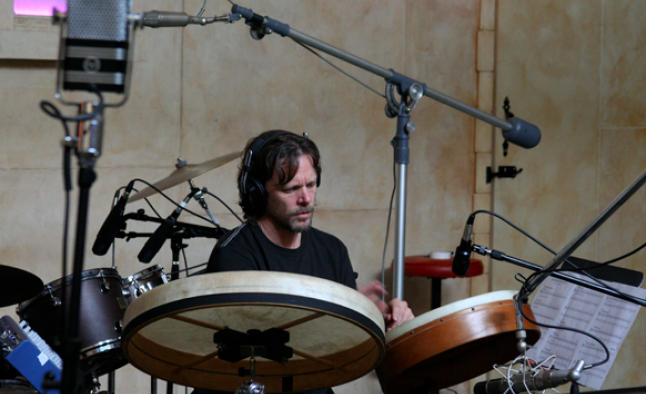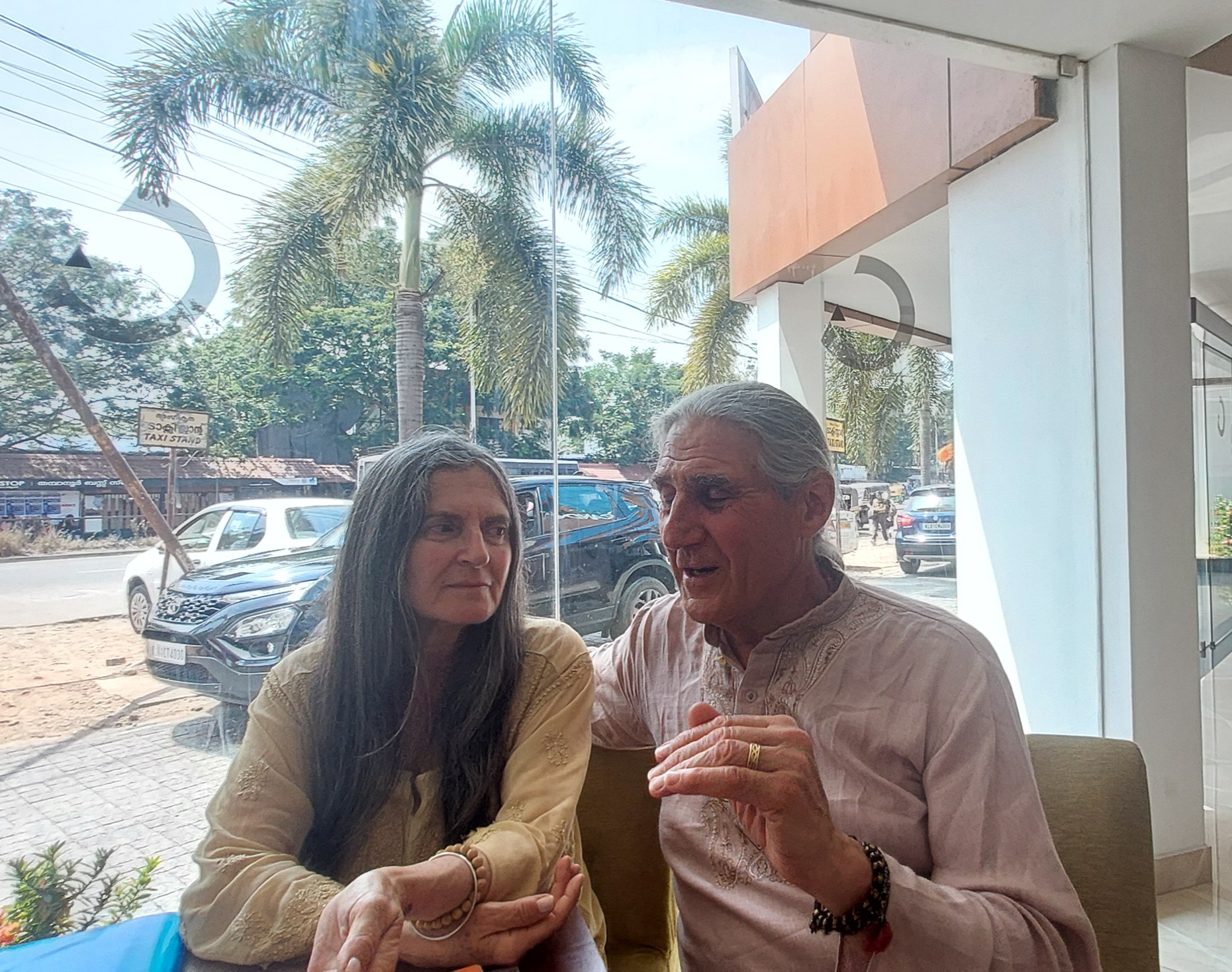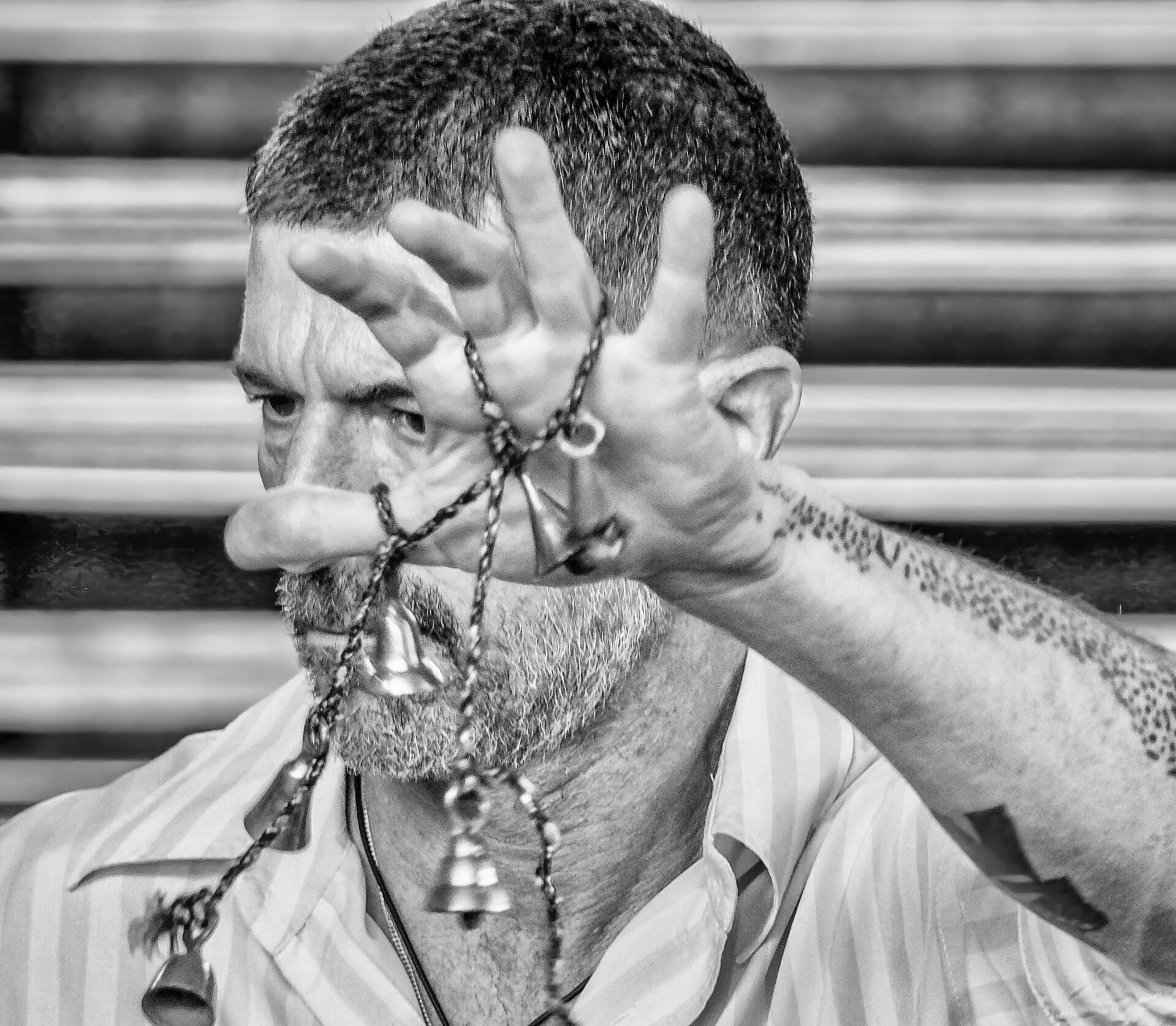Good morning from Los Angeles. The sun is just coming up, and we’re in the middle of a very intense heat wave. But it’s a good time to be doing this—up here on my rooftop.
I believe that the softest form of soft power is music. The arts, in general, have a deep impact, but music, in particular, has this incredible ability to connect us.
I've been coming to India for over 25 years and have had the privilege of working with some of the most legendary and luminous artists—Zakir Hussain, Bikram Ghosh, Shankar Ghosh, Lakshmi Shankar—just to name a few, as well as artists in the Bollywood world.
When I first went to India, I realized how many preconceived notions we, in the West, have about the country. At first, I wanted to uncover its secrets, but I soon realized that instead of seeking to understand it in a linear way, I needed to observe, to immerse myself in its essence.
By the time I arrived in India, my career as a drummer was already established. But I had never really played Indian music before. I was in my early 30s, and I quickly understood that if I wanted to truly learn Indian music, I had started too late. It would take another lifetime. So rather than becoming a student of Indian music in a formal sense, I chose to immerse myself in its feeling, its sensibility.
Playing alongside some of the finest musicians—from Hindustani classical to pop and Bollywood—I realized that Indian music has its own unique language. And to truly access it, you have to learn to speak that language.
I am a self-taught musician. I never had a teacher who gave me boundaries or a tradition that I was responsible for upholding. In many ways, that has been an advantage—it allowed me to explore freely. But I have also felt the absence of that deep sense of belonging that comes with a musical lineage.
India gave me that belonging—not through formal study, but through an understanding that went beyond words. The essence of its culture—expressed through its music, food, art, architecture, and spirituality—was something I wanted to fully immerse myself in. And in doing so, I realized something that has been lost in the West. It’s not necessarily the discipline, the traditions, or the legacies that are missing—but rather, the essence of the soul. The essence of what moves us.
Through my collaborations with Indian musicians, I have sought to share that essence, that perspective of India. Because it is not just about the notes, the rhythms, or the techniques—it is about the spirit of the music, the feeling it evokes, and the deep sense of connection it creates.
I didn’t want to come to India and say, “I’m a very good American tabla player,” or pretend that I fully understand all the tihais. Instead, I knew that my accent—my musical accent—would be evident. So rather than imitating, I found my own language to communicate with Indian musicians.
This is something I do with musicians around the world. I’ve performed concerts for hours with artists I’ve never even spoken a word to—literally, because we don’t share a common language. Yet on stage, we understand each other completely, in the moment, through the form of expression that is music. And that fascinates me—the language of music, the way it transcends words.
Today, we’re going to see tangible examples of how India’s soft power influences the world. But beyond the visible, there is an essence in Indian culture that I feel even some Indians may not fully recognize.
That’s why I’ve spent years collaborating with musicians who do understand this concept—the idea of influencing through influence itself. Earlier this year, from January to March, I was in India, touring, performing, and meeting artists who share this perspective. And when I return to India, I don’t come to simply showcase what I’ve done abroad by translating Indian music into another form. Instead, I bring back an example of how deeply this culture has influenced the world.
Many people think India’s global musical influence started with The Beatles in the 1960s, when they discovered the sitar and elements of Indian music. Over the years, countless musicians have sampled Indian sounds. But what truly happened when The Beatles came to India wasn’t just a literal change in their music—it was a shift in perspective. It opened Western eyes to a deeper, more expansive understanding of culture.
Many Indian traditions are built on this very idea—the transmission of essence rather than just form. And that’s what I try to express in my music. It’s not about capitalizing on or appropriating Indian culture. It’s about embracing it so deeply, with such profound respect, that what emerges is something entirely new.
A lot of collaborations between the West and India are simply mashups—Western styles layered onto Indian elements. But true fusion isn’t about mixing two things together; it’s about starting from nothing and allowing something organic to grow.
Right now, I’d like to share a minute of music from an album called Kaleidoscope. This track features AB Madhav, a wonderful Hindustani classical singer from Mumbai. I originally wrote these pieces during the lockdown—more as a form of therapy for myself, to find peace with my studio when I couldn’t perform live. The music was deeply personal, but when I shared it with AB Madhav, he was so moved that he started singing on it. He recorded his vocals and sent them to me, and from that collaboration, Kaleidoscope was born.
What I want you to pay attention to in this next piece is that while the singer is performing in a raga, the music itself isn’t rooted in the traditional framework of Hindustani classical music. There’s no tanpura, no tabla—yet the essence of the raga remains. It’s not something you need to study or analyze; it’s something you simply feel.
This is also the essence of my music. You can’t categorize it as one genre or another. Instead, it embeds these concepts in a way that reflects what happens when two musicians truly come together—bringing their life experiences, cultures, and influences and allowing them to roam freely in sound.
I’ll play a minute of this now.
What I find fascinating is the way listeners respond. When I’ve shared this music with Indian audiences and musicians, they recognize the raga. They sense its deep cultural imprint, even though it has been deconstructed and reimagined. When I play it for my friends and colleagues in the West, they don’t need to know which raga it is or that it’s meant to be listened to in the early morning. They simply hear beautiful vocals.
Yet the response from both sides is remarkably similar.
On one hand, you have listeners who approach the music with no reference to its origins, responding purely to the emotions it evokes. On the other, you have Indian audiences who recognize the structure of the raga and appreciate how its essence has been distilled into something new. In both cases, the music transcends labels—it connects on a deeper level.
As I wrap up, I want to share a story about my dear friend, the legendary tabla maestro Pandit Shankar Ghosh. I’ve worked closely with his son, Bikram Ghosh, for over 25 years, and over time, I became very close to Shankarji as well.
About 20 years ago, I was struggling with the idea that since I was playing with so many Indian musicians, maybe I should formally study Indian music—perhaps learn the language, the phonetics, so I could communicate more directly. By then, I was well into my 40s, and I wondered if it was too late.
Pandit Shankar Ghosh gave me a piece of advice that has stayed with me ever since. He told me, "Never forget where you come from."
For those who don’t know, Shankarji was one of the most preeminent tabla players of India, on the level of Ustad Alla Rakha—one of the very best. He knew my musical roots were in rock and roll, that I had a deep sense of groove very different from Hindustani classical music. But he reminded me that what we bring to music is not just culture, tradition, or what we’ve studied and memorized. What we bring is ourselves.
Each of us has a unique life experience, yet when you break it down, our emotions—pain, joy, realization—are universal. We don’t need to fit into rigid categories.
Coming to India freed me from the feeling that I was “less than” simply because I didn’t understand the traditional language of Indian music. Instead, I realized I was speaking a dialect of music and rhythm that was understood nonetheless. And that’s the ultimate goal of soft power—not dominance, not control, but influence through authenticity.
India has an enormous head start when it comes to influencing through soft power. The essence of this culture exists nowhere else—just as every culture has its own unique essence. The key is not simply finding common ground but recognizing, respecting, and embracing influences that come from a place of purity, truth, honesty, and authenticity.
When that happens, cultures don’t just borrow from one another—they create something entirely new.




